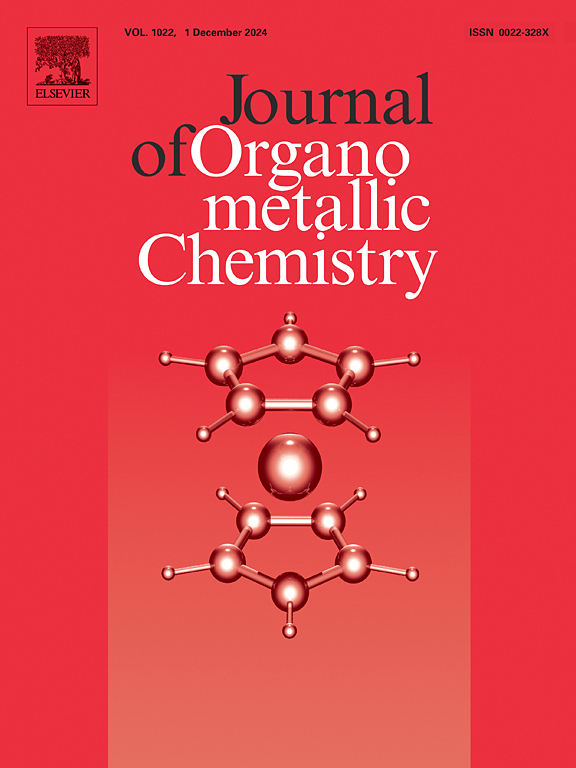Felicitous cationic dye adsorption from aqueous solution using Sn- based catalysts: An incorporated experimental and theoretical research
IF 2.1
3区 化学
Q3 CHEMISTRY, INORGANIC & NUCLEAR
引用次数: 0
Abstract
Toxic synthetic dyes, which possess complex aromatic structures, have been gotten out into wastewater from various arms. The adsorption technique has become an appealing approach for the elimination of dye pollutants from water in order to solve this problem. Little adsorption studies were done on the adsorbents of Sn-based catalysts in spite of their easy preparation; affordability and stable characteristics have made them some of the most sought-after adsorbent materials for study at this time. This work presents unparalleled comprehensive experimental research together with theoretical simulations at the DFT-B3LYP/6–31 G (d,P) level of theory for the carcinogenic cationic dye adsorption upon new modified binary Sn-based nanocomposites. The synthesis of SnO2@SiO2 nanocomposite with different types of surfactants system via surfactant-assisted ultrasonic sol gel method has hardly been discussed in the literature, which motivates us to synthesize this nanocomposite in this approach. According to both the experimental and theoretical results, the insertion of silica and different surfactant types resulted in significant improvement in their SBET values, crystal size, zeta potential, uniformly pore size distribution, total pore volume, dipole moment, electronegativity, electrophilicity, energy gap, total energy, and the adsorption energy. The obtained adsorbent characteristics proposed that the synthesized surfactant-assisted-modified composites can be hard done as excellent adsorbents for the carcinogenic cationic dyes present in the industrial wastewater. It is detected to adsorb ∼100 % of methylene blue (MB) from aqueous solution within just 5 min. at room temperature and normal pH. The impact of variables such as the adsorbent dose, contact time, temperature, pH, and the initial dye concentration was examined. The kinetic and isotherm models determined that the pseudo-second order and Langmuir isotherm models, respectively, suit the data well. An integrated experimental and theoretical study for the MB dye adsorption reaction mechanism onto the SnO2@SiO2 nanocomposite was discussed in detail. Comparison evaluation with other adsorbents in literature was done.

锡基催化剂在水溶液中吸附阳离子染料的实验与理论研究
具有复杂芳香族结构的有毒合成染料已被排放到各个武器的废水中。为了解决这一问题,吸附技术已成为消除水中染料污染物的一种有吸引力的方法。锡基催化剂吸附剂制备简单,但对其吸附性能的研究较少;可负担性和稳定性使它们成为目前最受欢迎的吸附剂材料。这项工作提供了无与伦比的综合实验研究,并在DFT-B3LYP/ 6-31 G (d,P)水平上对新型改性二元锡基纳米复合材料上致癌阳离子染料吸附的理论模拟。利用表面活性剂辅助超声溶胶-凝胶法合成不同类型表面活性剂体系的SnO2@SiO2纳米复合材料在文献中鲜有讨论,这促使我们采用这种方法合成该纳米复合材料。实验和理论结果表明,二氧化硅和不同类型表面活性剂的加入对SBET值、晶体尺寸、zeta电位、均匀孔径分布、总孔容、偶极矩、电负性、亲电性、能隙、总能和吸附能都有显著的改善。所得的吸附剂特性表明,所合成的表面活性剂辅助改性复合材料可作为工业废水中致癌阳离子染料的优良吸附剂。在室温和正常pH下,仅5分钟即可从水溶液中吸附~ 100%的亚甲基蓝(MB)。研究了吸附剂剂量、接触时间、温度、pH和初始染料浓度等变量的影响。动力学模型和等温线模型分别确定了拟二阶和Langmuir等温线模型较好地符合数据。对纳米复合材料SnO2@SiO2吸附MB染料的反应机理进行了实验和理论的综合研究。并与文献中其他吸附剂进行了比较评价。
本文章由计算机程序翻译,如有差异,请以英文原文为准。
求助全文
约1分钟内获得全文
求助全文
来源期刊

Journal of Organometallic Chemistry
化学-无机化学与核化学
CiteScore
4.40
自引率
8.70%
发文量
221
审稿时长
36 days
期刊介绍:
The Journal of Organometallic Chemistry targets original papers dealing with theoretical aspects, structural chemistry, synthesis, physical and chemical properties (including reaction mechanisms), and practical applications of organometallic compounds.
Organometallic compounds are defined as compounds that contain metal - carbon bonds. The term metal includes all alkali and alkaline earth metals, all transition metals and the lanthanides and actinides in the Periodic Table. Metalloids including the elements in Group 13 and the heavier members of the Groups 14 - 16 are also included. The term chemistry includes syntheses, characterizations and reaction chemistry of all such compounds. Research reports based on use of organometallic complexes in bioorganometallic chemistry, medicine, material sciences, homogeneous catalysis and energy conversion are also welcome.
The scope of the journal has been enlarged to encompass important research on organometallic complexes in bioorganometallic chemistry and material sciences, and of heavier main group elements in organometallic chemistry. The journal also publishes review articles, short communications and notes.
 求助内容:
求助内容: 应助结果提醒方式:
应助结果提醒方式:


